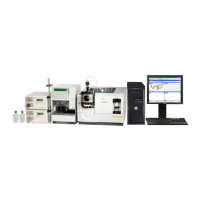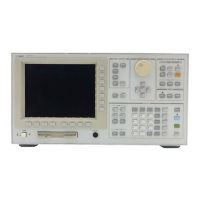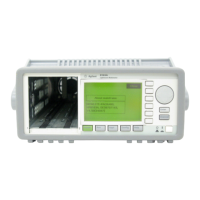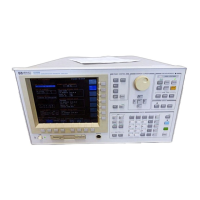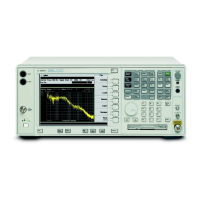When using the continuous random noise source, you must apply a Hann
window to the time-domain data to reduce leakage in the frequency domain.
However, multiplication in the time domain corresponds to convolution in the
frequency domain. This means that the frequency response is convolved with
the fourier transform of the Hann window, which produces slight frequency
smearing (the main lobe of the window is approximately three bins in width).
This frequency smearing can affect measurements on systems with sharp peaks
in the frequency response such as those seen in mechanical
resonances—frequency smearing bias errors increase the apparent damping of
the poles. Thus, a better measurement results if you use the burst random
source with source trigger and a uniform window (burst random is a
self-windowing stimulus when source trigger is used). The Fourier transform
of a uniform window has a narrower main lobe than that of a Hann
window—this provides the best resolution bandwidth possible for a given span.
The other broadband source available is periodic chirp. This source type is
completely predictable in that it provides exactly the same stimulus from one
measurement average to the next. Thus, nonlinearities produce the same
distortion products with each average. Consequently, averaging is of no value
in reducing the effects of nonlinearities when a periodic-chirp source is used.
In addition, the periodic-chirp source makes coherence very high, giving a
false impression of a good measurement when nonlinearities may be
significant. The periodic-chirp source works best when the system under test is
reasonably linear.
One difficulty with using broadband stimuli in some systems is that a signal
which is sufficiently strong to provide good signal-to-noise ratios over one
portion of the measured span may be too strong for another portion, causing
excessive distortion—and possibly rendering the system-under-test inoperable.
The Swept Sine mode (Option 1D2) can provide a solution to this problem.
Stimulating the system with a sine wave allows for control of the signal level at
a single frequency (rather than broadband noise) over the frequency response
measurement. The autolevel feature can be used to automatically adjust the
source level, as the sweep progresses, to maintain a constant reference level on
one of the input channels. Typically, the input channel chosen as the reference
is the channel connected to the output of the system under test. With this
configuration, the output of the system is held constant rather than the input.
This reduces the overall level of distortion while maintaining the
signal-to-noise ratio.
Agilent 35607A
Curve Fit Option 1D3 Operator's Guide
16-12
